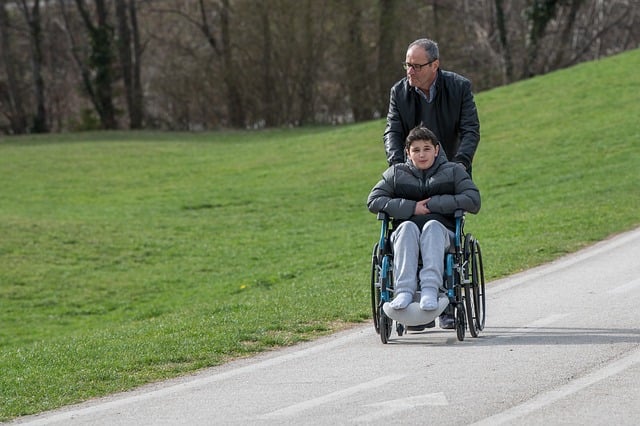In the realm of accessibility and inclusion, understanding the diverse spectrum of mobility issues is essential. Mobility challenges can affect individuals of all ages and backgrounds, and they encompass a wide range of conditions, each with its unique characteristics and impact on daily life. From temporary injuries to chronic disabilities, exploring the nuances of these issues can foster greater empathy, awareness, and support within our communities.
Defining Mobility Issues
Mobility issues refer to any condition or impairment that affects an individual’s ability to move freely and independently. While some mobility limitations are visible, such as those requiring mobility aids like wheelchairs or walkers, others may be less apparent, affecting internal bodily functions or coordination. It’s crucial to recognize that mobility issues are not solely confined to physical disabilities; they can also stem from neurological disorders, chronic illnesses, or temporary injuries.
Types of Mobility Issues
- Physical Disabilities: Physical disabilities encompass a broad spectrum of conditions that affect mobility, including paralysis, limb loss, muscular dystrophy, and cerebral palsy. These conditions can vary in severity and may require different forms of assistive devices or adaptations to navigate the physical environment.
- Neurological Disorders: Conditions such as multiple sclerosis (MS), Parkinson’s disease, and spinal cord injuries can lead to mobility impairments due to nerve damage or dysfunction. These disorders may cause muscle weakness, tremors, coordination difficulties, and balance problems, impacting an individual’s ability to walk or perform everyday tasks.
- Chronic Illnesses: Chronic illnesses like arthritis, fibromyalgia, and chronic fatigue syndrome can significantly impact mobility by causing pain, stiffness, and fatigue. These conditions may fluctuate in intensity over time, making it challenging for individuals to predict and manage their mobility needs on a day-to-day basis.
- Temporary Injuries: Injuries resulting from accidents, sports-related incidents, or medical procedures can temporarily restrict mobility and require rehabilitation to regain full function. While these injuries may be short-term, they can still have a significant impact on an individual’s ability to engage in daily activities and participate fully in society.
- Age-Related Decline: As people age, they may experience a decline in mobility due to factors such as muscle weakness, joint stiffness, and reduced balance. Age-related mobility issues can make tasks like walking, climbing stairs, and getting in and out of chairs more challenging, increasing the risk of falls and injuries.
Understanding the Impact
The impact of mobility issues extends beyond physical limitations; it can also affect an individual’s emotional well-being, social interactions, and overall quality of life. Feelings of frustration, isolation, and dependence are common among individuals grappling with mobility challenges, particularly when faced with inaccessible environments or societal stigma.
Furthermore, mobility issues can create barriers to employment, education, and recreational opportunities, limiting one’s ability to fully participate in society and pursue their goals and interests. Addressing these barriers requires not only physical accommodations but also a shift in attitudes and perceptions toward disability, promoting inclusivity and equal access for all.
Supporting Individuals with Mobility Issues
Empathy, understanding, and proactive support are key to creating a more inclusive environment for individuals with mobility issues. Here are some ways we can support and empower those facing mobility challenges:
- Accessible Design: Emphasize the integration of universal design principles in the development and building processes of structures, public areas, and transit systems. This approach guarantees inclusivity and accessibility for individuals facing mobility challenges, such as those residing in Boise, Idaho, who may benefit from features like residential elevators, for instance.
- Education and Awareness: Foster awareness and understanding of different types of mobility issues through education campaigns, workshops, and community outreach initiatives. Encourage empathy and compassion towards individuals with disabilities, challenging stereotypes and misconceptions.
- Advocacy and Policy Reform: Advocate for policy changes and legislative reforms that promote accessibility, equal rights, and opportunities for individuals with mobility issues. Support initiatives that address systemic barriers and promote the full inclusion of people with disabilities in all aspects of society.
- Supportive Services: Ensure access to supportive services and resources, such as mobility aids, assistive technology, physical therapy, and personal assistance, to enhance independence and quality of life for individuals with mobility challenges.
- Inclusive Communication: Use inclusive language and communication strategies that respect the dignity and autonomy of individuals with disabilities. Seek input from people with lived experience to ensure that policies, programs, and services are responsive to their needs and preferences.
In Conclusion
Navigating mobility issues requires a multifaceted approach that recognizes the diversity of experiences and challenges faced by individuals with disabilities. By understanding the different types of mobility issues and their impact on daily life, we can work towards creating a more inclusive and supportive society where everyone has the opportunity to thrive and participate fully. Empathy, awareness, and proactive action are essential in breaking down barriers and building a world where mobility is not a limitation but a pathway to empowerment and inclusion.
Also read:
Embracing Wellness: Top Tips for a Healthy Pregnancy Journey
